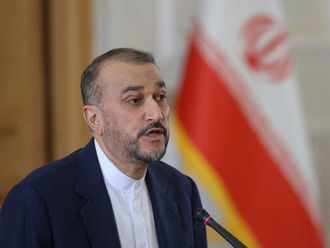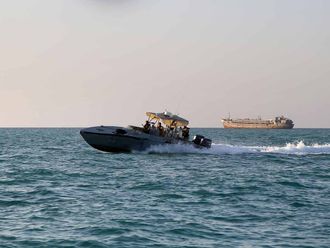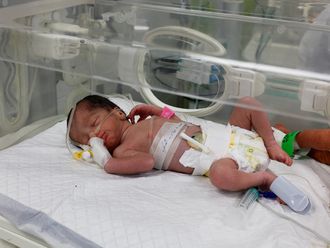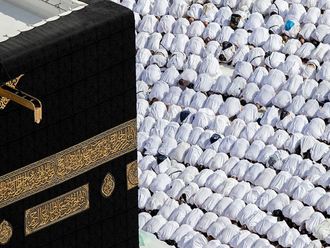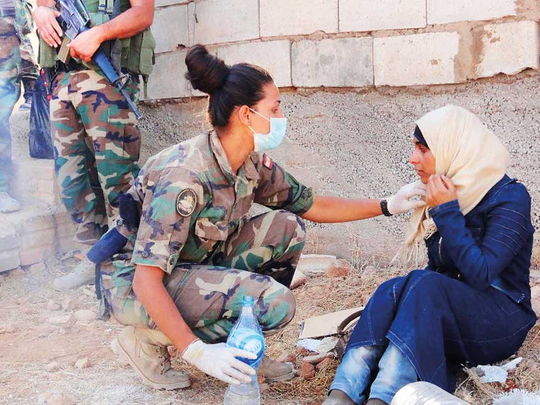
Beirut: Recent clashes between Lebanese and Syrians, including vigilante acts against refugees who proposed to demonstrate against the Lebanese Army because of the latter’s early July raids that targeted specific camps, prompted authorities to arrest dozens and ban all protests.
Rising tempers prompted President Michel Aoun to call for calm, even as he acknowledged the frustrations of those who feel burdened by the refugee presence, especially when law enforcement authorities are targeted. “Resolving the refugee crisis,” maintained Aoun, “will not be via disseminating and propagating hatred.”
In recent days, accusations that the Lebanese Armed Forces (LAF) tortured Syrian refugee prisoners (four of whom died in custody after they were picked up in mass raids near Arsal along the Syria-Lebanon border) filled the airwaves and social media networks, further raising tensions. The episode forced the Prime Minister to confront the Commander of the LAF in what observers concluded was a tough meeting and that compelled Sa‘ad Hariri to order an official inquiry — which is still under way — even if initial forensic reports claimed there was “no evidence of violence” against the four prisoners.
Photographs and videos circulating online showed that the men were mistreated, which heightened tensions among the estimated two million Syrians living in Lebanon, some of whom called for anti-LAF protests in what was an unprecedented demand.
Lebanese reactions were mixed, with critics assuming that natives are racists who treat refugees as little more than nuisances. Whatever animus lingers in 2017 is, first and foremost, a legacy of centuries of mistrust between culturally close peoples who share much but disagree on ideological as well as political preferences.
For decades after 1943, Syria refused to accept the country’s independence, and only established diplomatic relations in 2008. Although that measure intended to place ties between the two neighbours on a more equal footing, tensions lingered because of a three-decade long occupation (1976-2005), the result of the Civil War (1975-1990) and various regional confrontations that perceived Lebanon as the ideal arena to settle scores.
Syria’s “peacekeeping” operations in Lebanon translated into a firm control until the 2005 assassination of the former Prime Minister Rafiq Al Hariri — an event widely blamed on Syrian agents though denied by Damascus — and that led to international pressure and unprecedented street protests that forced Syria to withdraw its troops.
Anti-Syrian Lebanese factions blamed Damascus for a series of political assassinations that barely ended after the launch of the 2011 uprisings that, in turn, swept Syria into its current mayhem. Consequently, Syrian refugees entered Lebanon by the thousands, with some joining family members, while others fled the onslaught.
By all accounts, the influx crossed the million figure according to the United Nations High Commissioner for Refugees (UNHCR), even if the real numbers were probably twice as high because so many failed to register with UN agencies. Senior Lebanese officials advanced the two million number in various declarations, but seldom provided accurate data — which was certainly available to law enforcement agencies — for fear of adding fuel to the refugee fire that consumed Lebanon.
According to the European Commission’s Humanitarian Aid and Civil Protection division, which allocated more a billion American dollars to alleviate dire conditions since 2011, Lebanon had the highest per capita concentration of refugees worldwide, where one person out of four in 2017 is a refugee.
Importantly, the European Union commended the government of Lebanon and its people for their outstanding generosity, though it also recognised the “steadily deteriorating conditions of the most vulnerable,” which forced some to become undocumented, unable to move about and access basic services.
In the event, and no matter how unpalatable the exposure to abuse and harassment may be, the Lebanese have maintained an open-door policy towards all refugees, especially Palestinians and Syrians, even if the UNHCR wryly noted that Beirut never signed the 1951 Refugee Convention that protects those who flee their native lands to avoid death and/or prosecution.
Therefore, and because Lebanon refused to build new refugee camps for Syrians, allegedly to avoid the negative experiences associated with the 12 Palestinian camps that were transformed into lawless entities, Syrians were forced to compete with the poor of Lebanon for the lowest paying jobs across the country that further added the burden on the economic infrastructure, and may have damaged several vital sectors like the electricity and water grids straining under pressure. Most accepted jobs in the construction and agriculture domains, though Syrians were hired to fill a variety of other positions, ranging the gamut from valet parking to grocery store clerks.
As the numbers of Syrians in Lebanon grew after 2011, so have tensions, as many displaced Lebanese citizens resented what they perceived were unfair conditions granted refugees.
Public safety concerns grew after petty crimes increased, which forced several cities and villages throughout the country to impose curfews that, in turn, separated the Lebanese from the Syrians even more.


